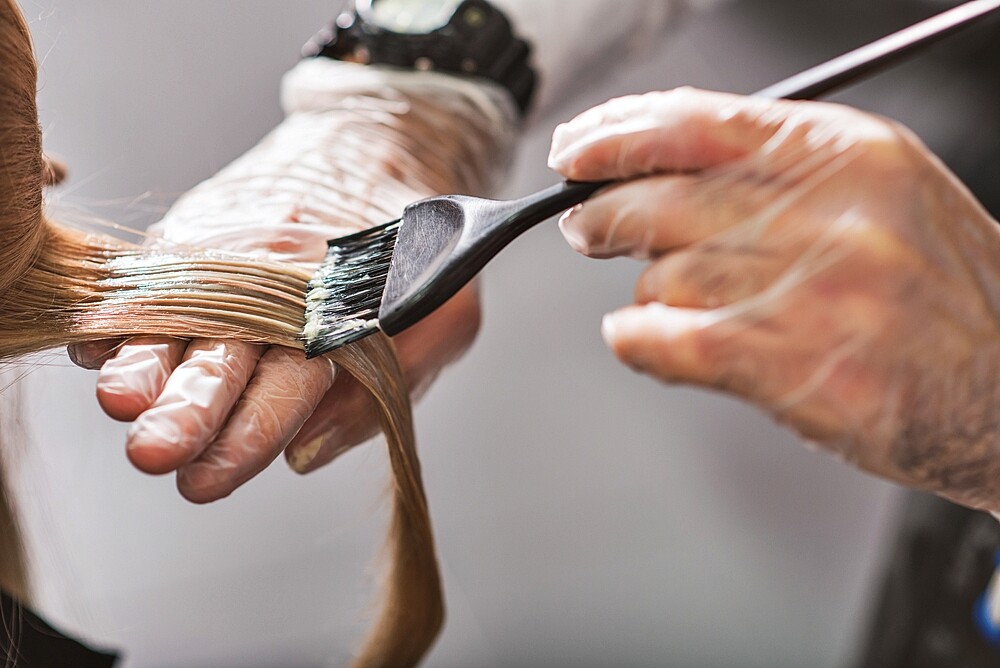New color? No problem with washable tints. In front of the beauty shelf, however, the question arises: what is a tint, what is a permanent color?
What is a tint?
A tinting is the lightest form of colour treatment. No matter whether it is a foam, gel or fluid, it dyes the hair only in the outer cuticle layer. Tints are ideal for experimenting with colour, refreshing coloured hair or deepening the natural tone. Whether red, brown, blonde or black: they are available in almost all hair colours. Lightening or covering up grey hair is not possible with them. In contrast to a proper coloration, the color pigments of a tint will be released from the hair after only a few weeks. After six to nine hair washes, the tone has faded. You can recognize a tint by the package imprint “Durability Level 1”, “Level 1” or “Group 1”.
Hair tinting: The right care
In order for the tint to last as long as possible, you should pay attention to the correct hair care. This includes using a mild shampoo and regular use of a conditioner. When buying the products, make sure that they are especially suitable for coloured hair. By the way, many manufacturers also distinguish between products for blonde, brown or red hair. If you want to refresh the colour in between, it is best to use a hair mask with colour pigments. This often allows the colour to survive even more hair washing than usual.
Tint your own hair? This is how the color change works:
- The preparation: If you want to tint your hair yourself, you should always do it in a well-lit bathroom. It’s best to put on an old T-shirt, because especially beginners can get some color stains on it. You should also have the following things ready: Disposable gloves, plastic comb for the even distribution of the tint, plastic hair clips (to fix single parts) and a watch. This will help you to stick to the time stated in the package insert – and that’s very important for a perfect look.
- Let’s go: How to tint your hair step-by-step is often described exactly on the packaging of the product and can vary slightly from manufacturer to manufacturer. In general, however, the following applies: Wet hair, towel it gently, put on disposable gloves and distribute the colour evenly from the roots to the ends. Whether you use your fingers or comb for this is a matter of taste. Fix longer hair with plastic hairpins.
- Also important: Do not throw away the gloves after applying the paint. They are also needed when foaming at the end of the procedure. But if the pair has become unusable, you can of course reach for a second, still new pair of gloves.
Tint: You should know that!
Hair tints, which can be purchased in stores, are differentiated between soft tints, with the imprint “Durability level 1”, “Group 1” or “Level 1” and the intensive tints. These have the package imprint “Durability Level 2”, “Group 2” or “Level 2” and colour the hair permanently. Among other things, they contain hydrogen peroxide so that their dyes not only attach themselves but also develop and anchor in the hair. After 15 to 24 washes, they become paler, but do not wash out completely. This means that an attachment remains visible. All those who want to try out a new hair colour and are still unsure about it should be careful with an intensive tint. Colour accidents can only be concealed with difficulty.
But intensive tints also have advantages: they have a grey coverage in the hair of up to 50 percent. Two tints of darker or lighter hair are thus achieved. By the way: Everything marked “Level 3” is also a permanent hair color, so it belongs to the colorations and must grow out. This also applies to the plant hair colour henna.
Attention: A heavy rain shower can bring colour from freshly tinted hair – so don’t forget your umbrella in the transition period. Pigments are also washed out when swimming; bathing caps protect.

